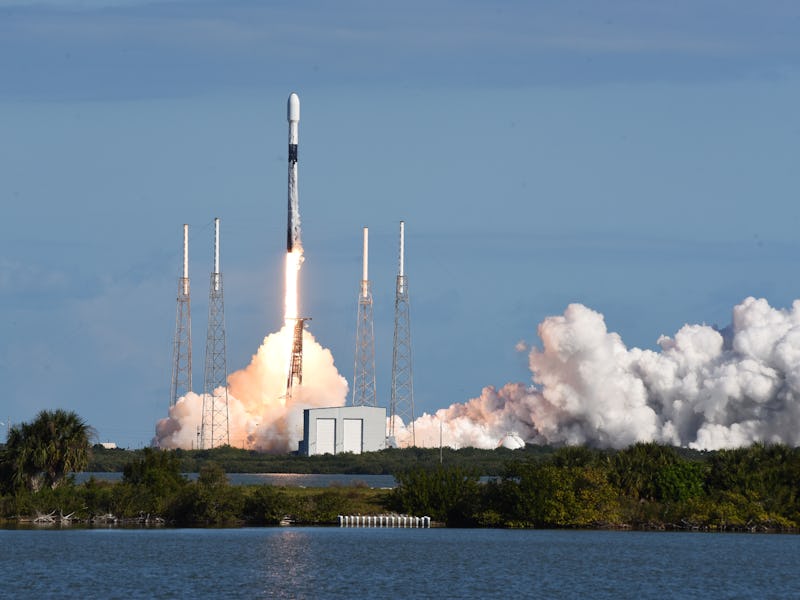SpaceX's latest launch was delayed for a 4th time for the strangest reason
You don’t see that every day.

SpaceX delayed its latest launch of a Falcon 9 rocket for the fourth time on Sunday — thanks to an unexpected ship in the hazard area.
The company planned to launch the COSMO-SkyMed Second Generation FM2 mission from Space Launch Complex 40 at Cape Canaveral Space Force Station in Florida. SpaceX announced the surprise delay via its Twitter page, and advised readers that it would target the next available opportunity at 6:11 p.m. Eastern time on Monday.
The delays highlight the difficult nature of achieving a rapid launch cycle. CEO Elon Musk’s stated long-term goal with SpaceX is to reduce the barriers around access to space, and use that to transform humanity into a multi-planet species.
Musk is targeting an average of three launches per day with the Starship, the company’s under-development fully-reusable rocket designed to start a city on Mars. This would mean that, at 100 tons to orbit per ship, SpaceX could launch around one megaton per year with 10 ships.
But at the moment, SpaceX’s current Falcon 9 launches face the reality of surprise delays like weather and ships. The company currently holds a turnaround record of 27 days for a single Falcon 9 booster, although it holds a more impressive record of 16 hours between launches with two different rockets.
Want to find out more about SpaceX’s plans for the future? Subscribe to MUSK READS+ for exclusive interviews and analysis about spaceflight, electric cars, and more.
Here’s what to know about SpaceX’s latest delay.
SpaceX’s latest delay: What happened
SpaceX planned to launch the Cosmo-SkyMed Second Generation FM2 satellite. eoPortal explains that this will work with another satellite to boost image quality for Italy’s observation satellites. They make their observations using synthetic aperture radar, or SAR.
The booster used for the mission previously supported two Falcon Heavy missions, the world’s most powerful operational rocket that hosted its maiden flight in February 2018. The Falcon Heavy has been described as, essentially, three Falcon 9 rockets strapped together.
SpaceX’s Falcon Heavy rocket.
The booster previously flew on the Arabsat-6A Falcon Heavy mission in April 2019, followed by the STP-2 mission in June 2019. Both halves of the rocket’s fairings also flew on previous SpaceX missions.
This was the fourth time the mission was delayed:
- The first, on Thursday at 6:11 p.m. Eastern time, was delayed due to unfavorable weather. It was 60 percent favorable prior to liftoff.
- The mission was delayed again from Friday at 6:11 p.m. Eastern time due to poor weather
- The mission was delayed from Saturday at 6:11 p.m. Eastern time due to weather conditions affecting pre-launch operations
The weather conditions were more than 90 percent favorable for Sunday’s mission — but unfortunately, the ship caused a surprise delay.
The ship, described as a “cruise liner” by SpaceX, has not yet been identified. Florida Today reported that two ships were scheduled to leave the nearby Port Canaveral on Sunday: MSC Cruises' Meraviglia, and Royal Caribbean's Harmony of the Seas.
SpaceX fans interested in watching the next launch attempt will be able to tune in Monday, around 15 minutes prior to liftoff, at the below link:
The Inverse analysis — External conditions are annoying for a company looking to speed up spaceflight, but it highlights a major roadblock with Musk’s long-term goal of reducing barriers to spaceflight.
If Musk wants to achieve his goals of establishing a city on Mars by 2050, he might encounter more of these roadblocks as he continues.
SUBSCRIBE TO MUSK READS+, A PREMIUM NEWSLETTER THAT COVERS THE WORLDS OF ELON MUSK, SPACEX, TESLA, AND EVERYTHING BETWEEN.